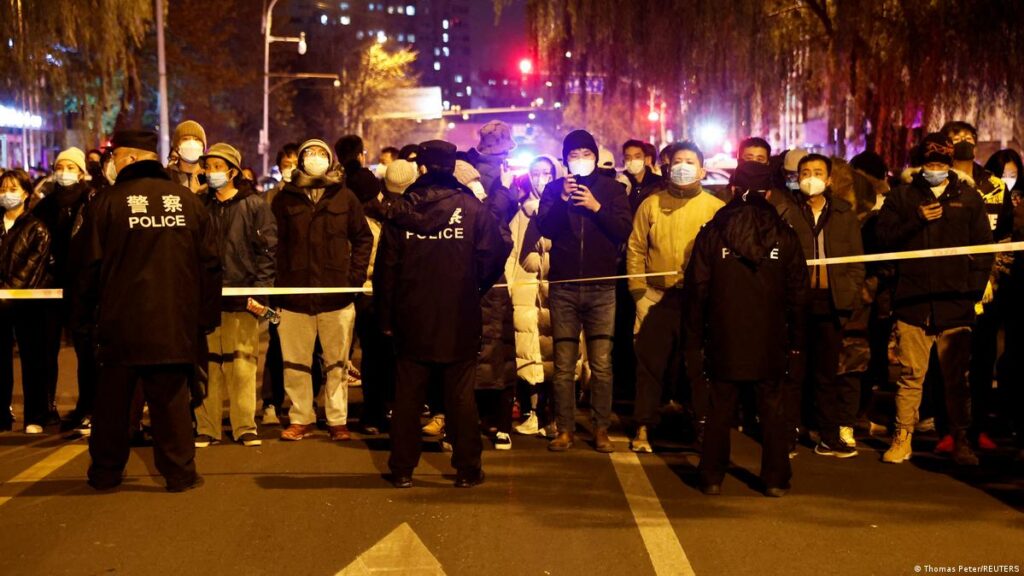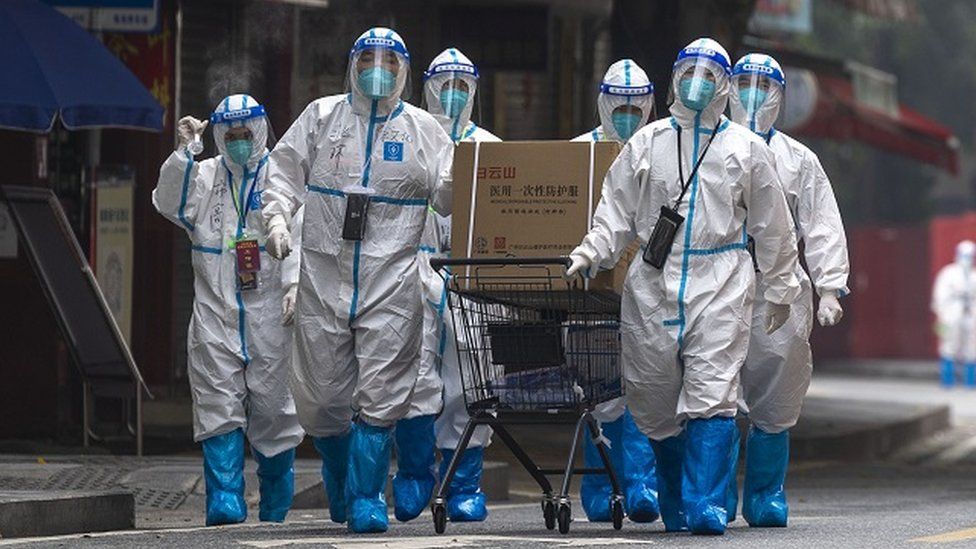China’s ‘Zero Covid’ Protests

Wherever Covid flares up in China, the “dynamic zero-Covid” strategy is used to get rid of it. These government activities not only prompted the need for countermeasures against the epidemic, but they also significantly affect how people live their daily lives.
As the only developed country with a rigorous zero-Covid policy, China continues to crack down on even the smallest outbreaks through mass testing, quarantines, and emergency lockdowns. However, as a result of the government’s recent actions, there have been widespread protests around the nation.
Cause of Protests
On November 24, a deadly fire broke out in Urumqi, the capital of Xinjiang’s far western region, setting off the protests. After videos of the incident appeared to reveal that lockdown procedures had prevented firefighters from reaching the victims, the public was outraged. The fire in the apartment building claimed the lives of at least 10 people and injured nine more.
Residents of the city had been unable to leave the area for more than 100 days, and many had been forced to remain at home.
Moreover, the Residents of Urumqi were seen in videos walking to a government building and chanting for the lockdown to end. The local authority stated that the lockdown would be lifted gradually but did not give a specific timeline or address the objections. That failed to calm the public’s outrage, and the protests quickly moved beyond Xinjiang, with people taking to the streets in cities and universities all over China.
 Where have protests erupted?
Where have protests erupted?
Since November 26, 2022, there have reportedly been 23 protests in 17 different Chinese cities, including the nation’s capital Beijing and its financial hub Shanghai.
On Urumqi Road, which has the name of the Xinjiang city, hundreds of people gathered in Shanghai for a candlelight vigil to remember the victims of the fire. Many others screamed, “Need human rights, need freedom,” while holding up white pieces of paper as a sign of their opposition to censorship.
Thousands of locals in Beijing, Chengdu, Guangzhou, and Wuhan joined in mass protests calling for the removal of Covid restrictions and, more surprisingly, political liberties. Some residents of neighbourhoods that were under lockdown tore down fences and went outside.
Additionally, there were demonstrations on college campuses, including those of the esteemed Peking University and Tsinghua University in Beijing, as well as the Communication University of China in Nanjing.
Dozens of protesters gathered for a vigil on November 28, 2022, in Hong Kong’s Central area, where a national security measure imposed by Beijing in 2020 has been used to crush dissent. While others left flowers and held signs honouring those who died in the Urumqi fire, some people held blank sheets of paper.
What’s happening in China amid protests?
Following the historic protests that swept China, numerous localities have moved to relax some Covid-19 restrictions, and a senior official has hinted at a more relaxed approach to virus controls, raising the possibility that zero-Covid may soon come to an end.
Furthermore, the most senior Chinese official in charge of the country’s Covid response stated that the “declining toxicity” of the Omicron strain, rising vaccination rates, and “accumulating expertise” in combating the virus had led to a “new stage and goal” in the pandemic response.
The Demand for Political Freedom
Many protesters, however, also advocated for more political liberties as the demonstrations grew. Some even called for Chinese President Xi Jinping to be ousted. Large-scale protests are quite uncommon in China. Although there have been occasional protests over local issues, this is the largest wave of anti-government rallies since the Tiananmen Square pro-democracy movement in 1989.
In this regard, the Chinese government reacted quickly, stationing police at significant demonstration locations, warning demonstrators by phone, and strengthening web restrictions.
Zero-Covid
One day after China’s National Health Commission (NHC) stated that the country’s current pandemic measures are being fixed and that local governments should “respond to and resolve the reasonable demands of the masses” promptly, Vice Premier Sun Chunlan said China’s “new stage and mission” in pandemic controls had just begun.
In a meeting with the NHC on November 30, 2022, Sun added that a “human-centred approach” should be used. China should also improve its “diagnosis, testing, treatment, and quarantine” measures, keep raising vaccination rates, especially among older people, and bolster its medication and medical resources.
Before any prospective relaxation of limits, experts have already stated that older adults must have greater immunisation rates.
Top health officials appeared to acknowledge the disruptions brought on by actions like lockdowns at a State Council press conference, saying prolonged closures “may generate worry and life troubles.”
According to Mi Feng, a representative for NHC, Covid policies are being changed to include lifting the lockout “as early as feasible” to minimise disruption.
According to the state-run news agency Xinhua, at least six Chinese cities, including Beijing, have recently changed their Covid policy. In certain cases, lockdowns have been lifted, quarantine rules have been loosened, and mass testing has been discontinued.
Global Response
Vigils and protests in support of Chinese demonstrators have recently taken place all around the world, notably in Malaysia, the United States, Australia, Canada, and the United Kingdom. Foreign groups and authorities have also expressed their support for the demonstrators and their disapproval of Beijing’s approach.
US National Security Council Coordinator for Strategic Communications John Kirby said “We are watching this closely, as you might expect we would”. “We continue to stand up and support the right of peaceful protest.”
Furthermore, UK Foreign Secretary James Cleverly told reporters the Chinese government should “listen to the voices of its people when they are saying that they are not happy with the restrictions imposed upon them.”
The European Broadcasting Union also said that it condemned “the intolerable intimidation and aggression” directed toward member journalists in China, in an apparent reference to foreign journalists who were detained during protests.
Conclusion
China’s potential for a secure China sounds like a fantasy that would take a lot of time to achieve. To give itself more time to implement effective methods like mass vaccinations, China has used short-term fixes like lockdowns.
Chinese residents are under a cloud of mistrust and rage. While these unprecedented protests are showing success, there is a potential that Xi Jinping would adopt more authoritarian tactics. It can be said that China may have to decide between stringent lockdowns and widespread protests or between increased COVID-19 cases and higher lockdowns.